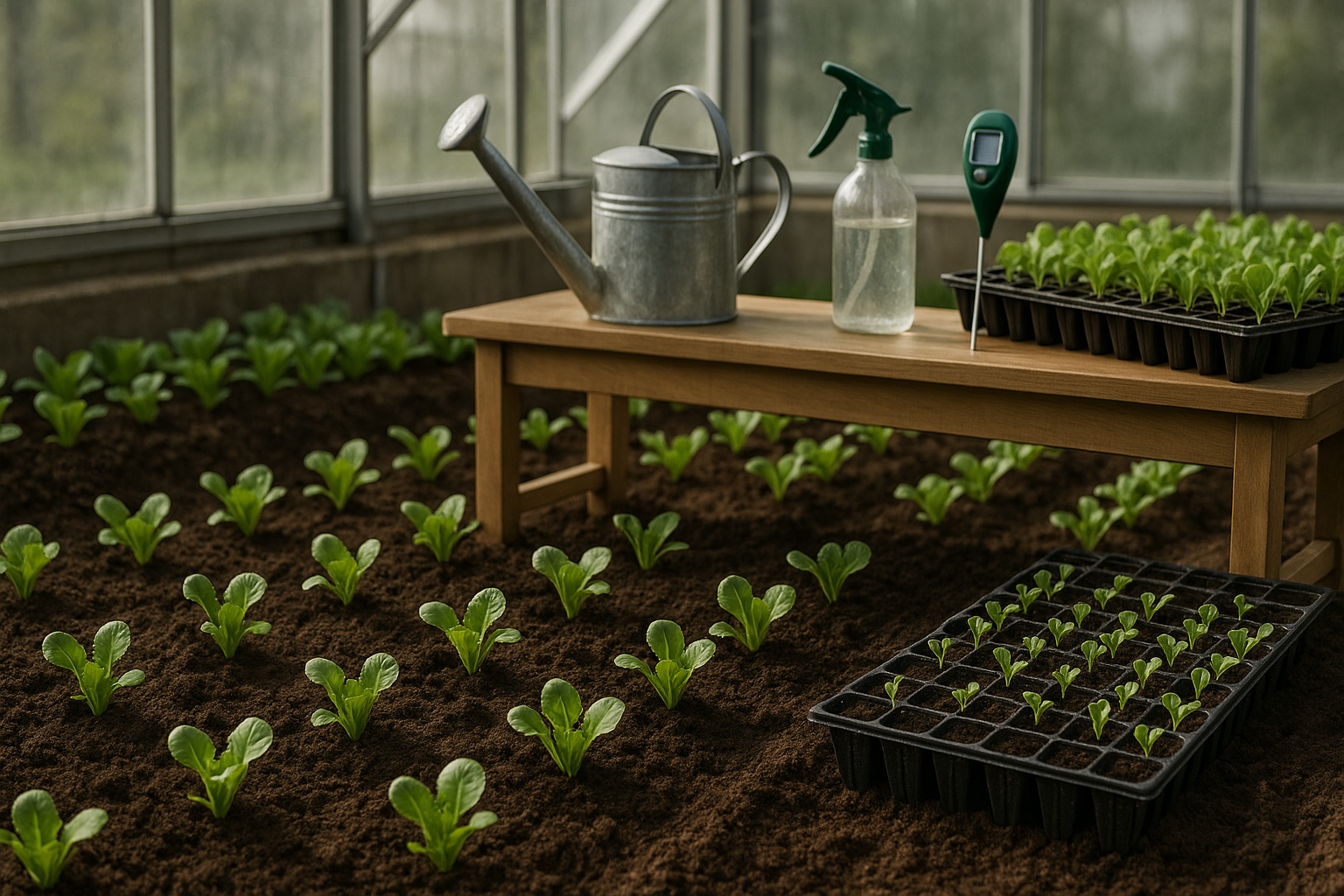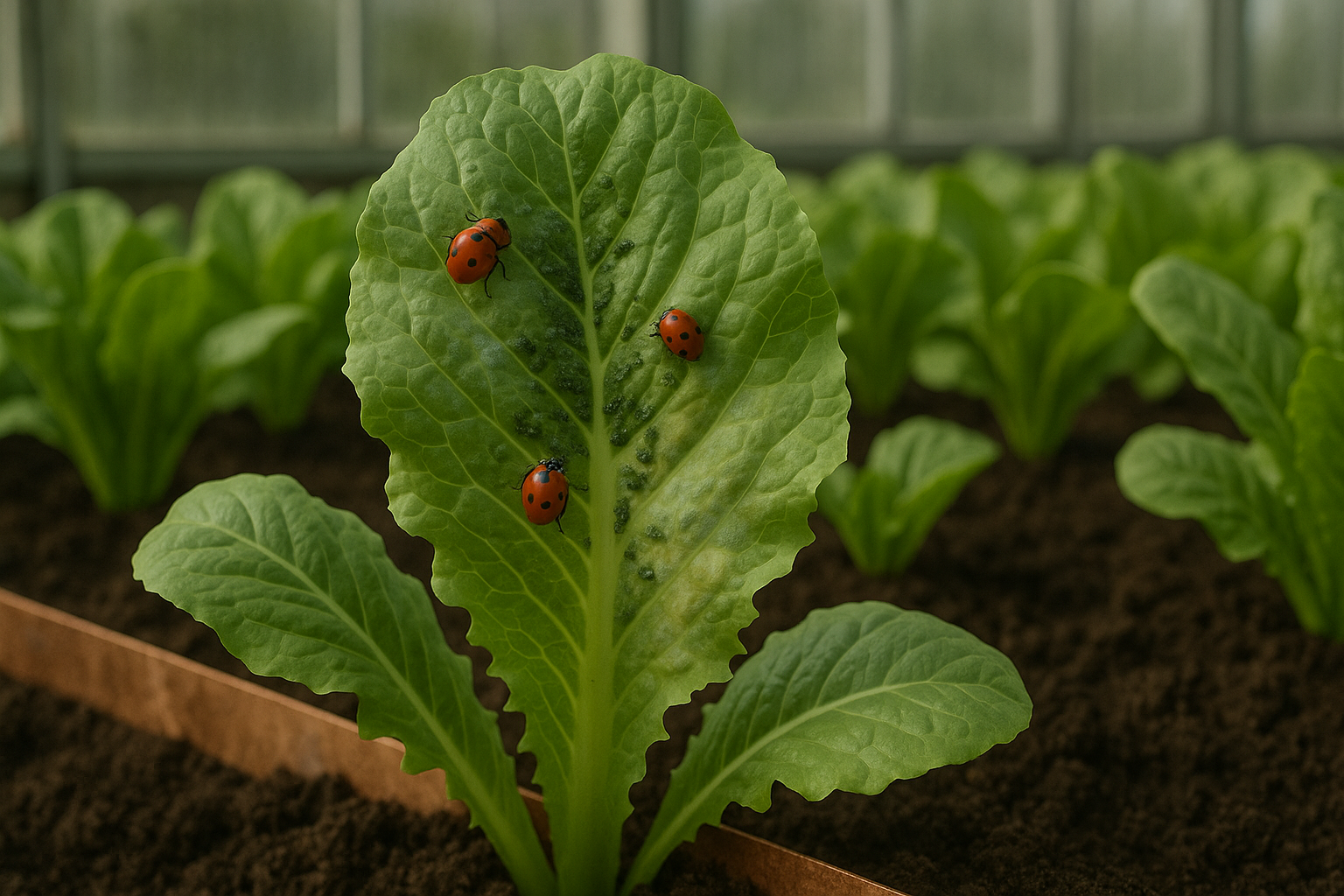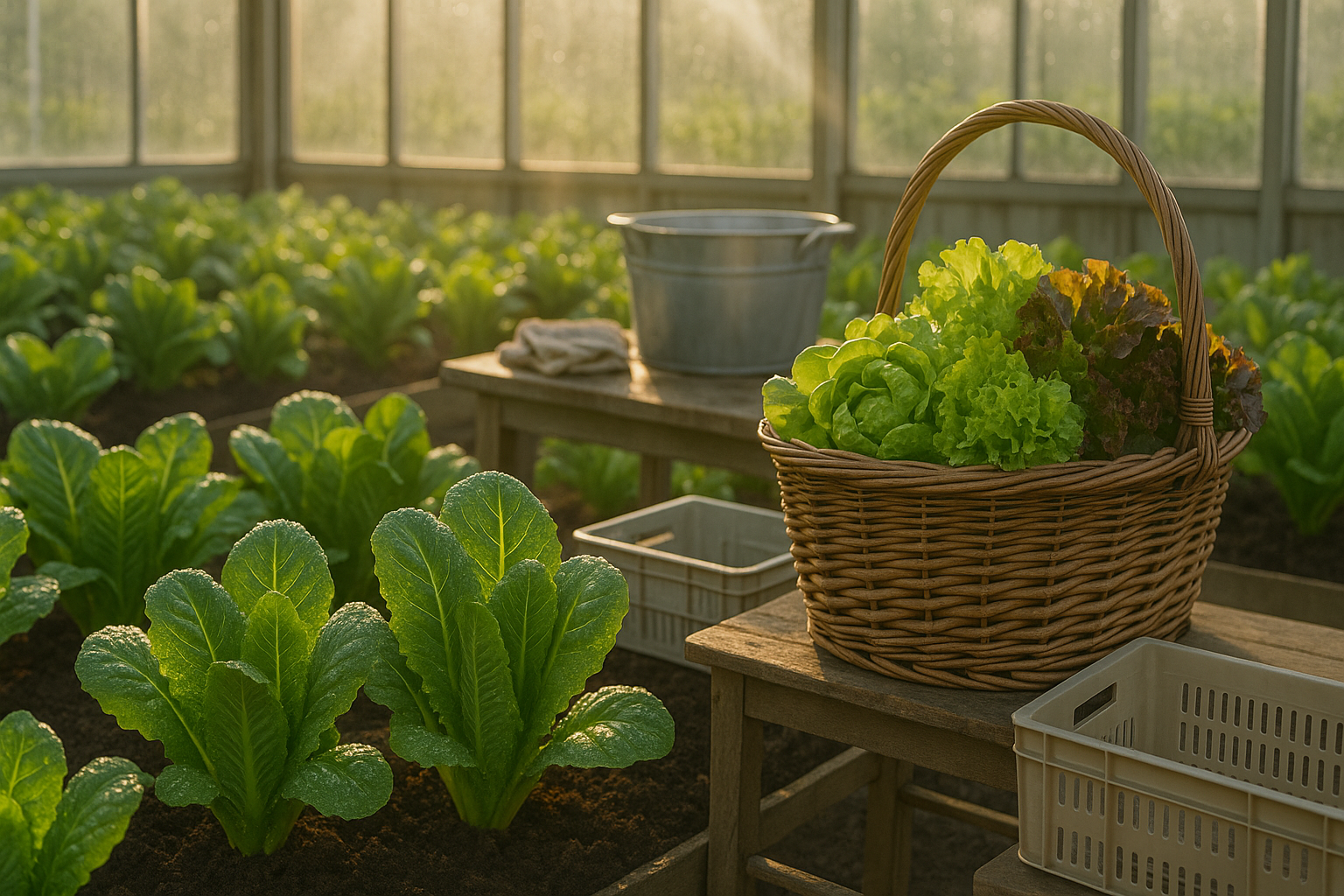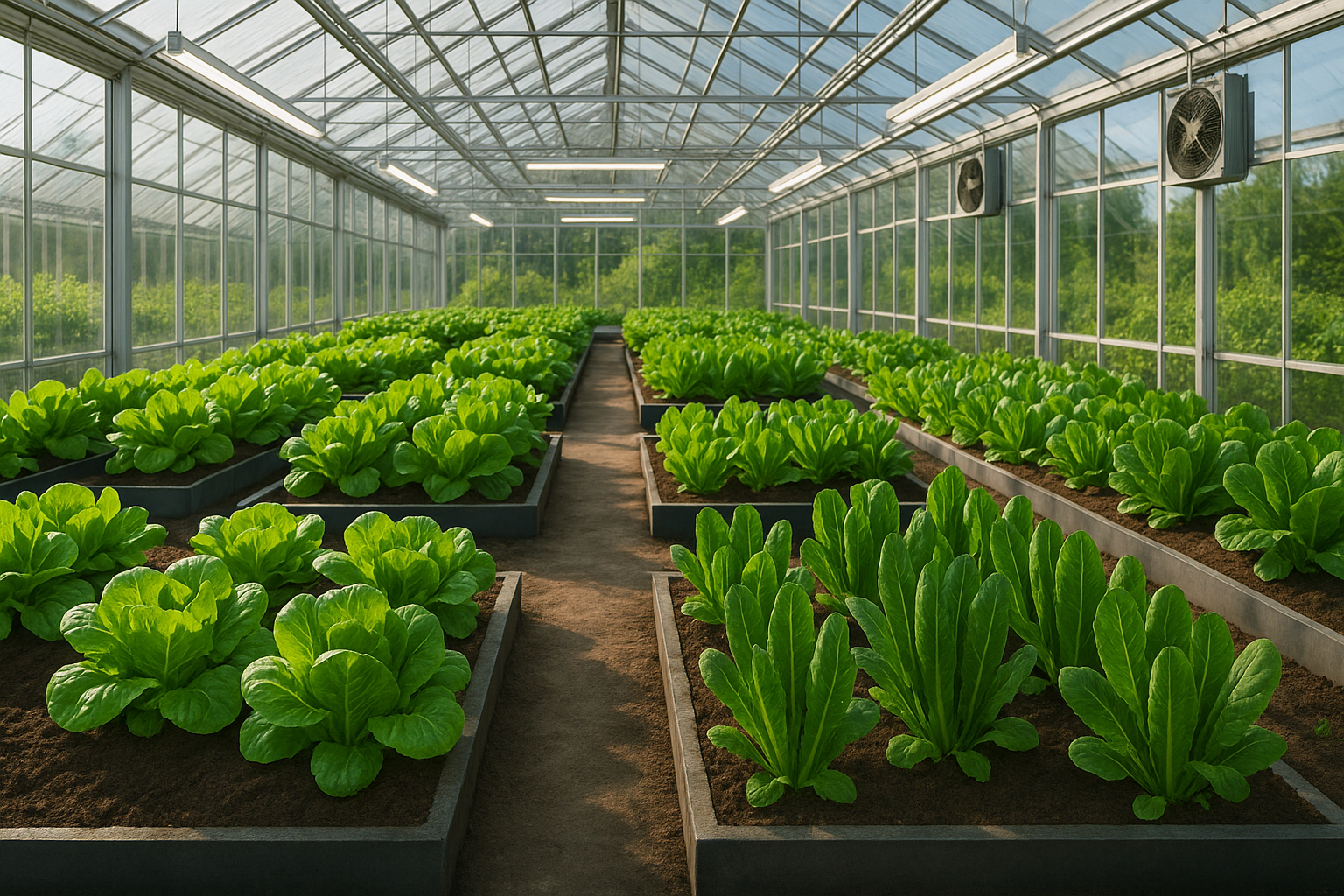Introduction to Year-Round Greenhouse Lettuce Growing
Growing lettuce in a greenhouse offers a reliable way to enjoy crisp, fresh greens all year long, no matter the outdoor weather or seasonal changes. For both home gardeners and commercial growers, cultivating lettuce in a controlled environment means you won’t have to worry about harsh frosts, droughts, or unexpected cold snaps that can stall outdoor growth.
One of the biggest perks is consistency—greenhouse lettuce can be grown for steady harvests week after week, avoiding the boom-or-bust cycles common in traditional gardens. Plus, with protection from pests, heavy rain, and extreme temperatures, the risk of crop loss drops significantly.
Compared to open-air gardening, greenhouses give you precise control over light, temperature, and humidity, letting you create the perfect cool, moist environment that lettuce loves. Since lettuce thrives under steady conditions, it’s an ideal crop for continuous cultivation under glass or plastic.
Lettuce is fast-growing and shallow-rooted, responding quickly to good care. There are plenty of varieties to choose from—from tender butterheads to crunchy romaine—so you can easily diversify your harvest. Whether you want a steady fresh supply for your kitchen or plan to sell at local farmers’ markets, growing lettuce in a greenhouse makes year-round, salad-fresh leaves a deliciously achievable goal.
Essential Requirements for Greenhouse Lettuce
Growing lettuce in a greenhouse requires careful attention to environmental conditions to ensure strong, consistent yields. Light is one of the most critical factors: lettuce thrives with about 12-16 hours of bright, indirect light daily. If sunlight is insufficient, especially in winter, supplement with LED grow lights to maintain steady growth.
Temperature also plays a vital role; lettuce prefers cool conditions, ideally between 16-21°C (60-70°F) during the day and slightly cooler at night. Overheating can trigger bolting—premature flowering that makes leaves bitter—so greenhouse growers should regularly monitor the thermostat.
Humidity should be kept between 50-70% to prevent dehydration or fungal diseases like mildew. The soil (if using a soil-based method) needs to be light, well-drained, and rich in organic matter; aim for a slightly acidic to neutral pH (6.0-7.0).
For those opting for hydroponic or aquaponic systems, ensure that nutrient solutions are balanced and changed regularly, with roots receiving plenty of oxygenated water.
Regular ventilation is essential, not just for regulating temperature but also for discouraging pests and diseases. Automated side vents, roof vents, or circulating fans can all help keep the air fresh and conditions steady.
Growing Methods
- Soil-based growing: Straightforward but requires ongoing weeding and disease management.
- Hydroponic systems: Eliminate soil, allowing lettuce to grow in nutrient-rich water—beneficial for rapid growth and space-saving vertical setups.
- Aquaponics: Combines hydroponics with fish farming, using fish waste as plant fertilizer. This system allows you to raise fish and grow lettuce simultaneously but requires more oversight.
By closely managing these environmental factors and choosing the growing method that best fits your resources, you can expect a reliable supply of crisp, healthy greenhouse lettuce year-round.
Step-by-Step Planting Guide

When it comes to year-round greenhouse lettuce, you have several great variety options to ensure both productivity and flavor. Butterhead types like ‘Bibb’ and ‘Buttercrunch’ thrive in greenhouse environments thanks to their disease resistance and tender leaves. For crispiness, try romaine varieties such as ‘Parris Island Cos’ or ‘Little Gem’; they tolerate cooler temps and have a longer harvest window.
Start seeds in trays using a sterile seed-starting mix, moistening the soil lightly and sowing seeds just ⅛ inch deep. Maintain consistent warmth (60-70°F) with gentle light, either from a sunny spot or grow lights. Once true leaves appear and seedlings reach about 2 inches tall, gently transplant them into the main greenhouse bed, hydroponic channel, or grow container.
For soil beds, enrich the plot with well-rotted compost and ensure good drainage—lettuce performs best in light, fluffy soils with a pH around 6.0-7.0. If you’re using hydroponics, opt for a nutrient-rich solution and regularly check water levels and pH, as lettuce appreciates steady, clean hydration.
Spacing is key: set plants 6-8 inches apart in staggered rows to maximize every square foot—this ensures airflow and reduces disease risk. In compact setups, consider tiered vertical systems or floating rafts for hydroponics to harvest more in less space.
Keep humidity moderate (around 50-70%) and ensure steady airflow with fans to prevent fungal problems. Mist seedlings daily until they establish, then water at the base in the mornings.
By combining the right varieties, careful spacing, and proper soil or hydroponic care, you’ll enjoy a steady supply of crisp, delicious lettuce all year long—making every salad a greenhouse success.
Managing Greenhouse Conditions Throughout the Year
Adapting your greenhouse to seasonal changes is key for healthy, consistent lettuce growth all year round. In summer, longer days and intense sunlight can quickly cause heat buildup, so use shade cloths—ideally with 30–50% shading—to diffuse light and protect tender lettuce from scorching.
Position fans near vents or doorways to boost airflow and prevent hot spots, since lettuce prefers cooler conditions; aim to keep temperatures below 75°F (24°C). Automated roof or side vents are a worthwhile investment, opening during the hottest parts of the day to release excess heat.
In contrast, winter brings shorter days and colder temperatures. Clear any debris from glass or plastic to maximize incoming sunlight, and consider supplemental grow lights for at least 10–12 hours of brightness daily. Install a thermostat-controlled electric or propane heater to ensure nighttime temperatures don’t dip below 45°F (7°C), since lettuce struggles in the cold.
To prevent drastic temperature swings, use thermal mass materials like water barrels, which absorb warmth during the day and release it after sunset. Seal any gaps or drafts, especially around doors and vents, with weatherstripping to retain heat.
Monitor humidity, aiming for around 50–70%, as overly damp air invites disease. Keeping a digital thermometer and hygrometer in plain sight helps you quickly spot and react to changes.
By blending practical solutions—such as shade cloths for summer and portable heaters for winter—with close attention to your greenhouse’s unique environment, you can create steady conditions that support vibrant, year-round lettuce production. Even simple tweaks, like opening a window or closing a vent at the right time, can make a big difference in maintaining the balance your crops need.
Common Problems & Effective Solutions

Greenhouse lettuce growers often battle pests like aphids, fungus gnats, and slugs, which can stunt growth or spread disease. Aphids cluster on new leaves, sucking sap and causing wilting. Try releasing beneficial insects like ladybugs or lacewings for natural control, or use a homemade soap spray.
Slugs and snails feed on tender leaves at night and can be managed by keeping the greenhouse tidy, removing hiding spots, and placing copper tape around beds—slugs dislike crawling over it. Fungus gnats thrive in overly damp soil, so avoid overwatering and use sticky traps near seedlings.
Common diseases include downy mildew and Botrytis (gray mold), which cause leaf spots, rot, and yield loss. Improve air circulation by spacing plants well, avoid wetting leaves during watering, and promptly remove any infected plants or foliage. For tough cases, try organic fungicides like copper or hydrogen peroxide sprays, and regularly sanitize tools and benches.
Physiological disorders like tipburn—a browning of leaf edges—often result from calcium deficiency or inconsistent watering. To prevent tipburn, keep soil moisture even (install drip irrigation if possible) and ensure proper fertilization by using a balanced lettuce fertilizer with micronutrients.
Integrated pest management (IPM) is your best friend: keep pests in check by monitoring plants daily, using barriers or physical controls (like mesh screens), rotating crops, and introducing beneficial insects when needed. Stay ahead of issues by practicing good sanitation, removing plant debris, and keeping humidity in check with fans or vents.
Problems are much easier to fix early—so walk your greenhouse often, check both sides of leaves, and respond quickly at the first sign of trouble. By combining these non-toxic, proactive approaches, you’ll keep your lettuce lush, healthy, and harvest-ready without harsh chemicals.
Harvesting Lettuce for Peak Freshness

To enjoy the freshest, crunchiest lettuce, timing your harvest is key, and each type benefits from a slightly different approach.
For leaf lettuce, begin harvesting when leaves are 3 to 6 inches long—simply snip outer leaves as needed, which encourages the plant to keep growing for weeks.
Romaine is best cut when the heads are about 6 to 8 inches tall and tightly formed; just use a sharp knife to slice the head off at the base, ideally in the morning when leaves are most hydrated.
Butterhead lettuce, known for its tender, delicate heads, should be harvested when the heads feel full and softly compacted—too late, and it may start to bolt, turning bitter.
To extend your harvest window, try successive planting: sow lettuce seeds every two to three weeks, ensuring a steady supply all season. Mark your planting dates on a calendar or gardening app so you remember when each batch will be ready.
After harvesting, gently rinse the leaves or heads in cool water to remove soil, then dry them with a salad spinner or by laying them on clean towels.
Store freshly harvested lettuce in the refrigerator, ideally in a loosely closed container or perforated bag to maintain humidity without trapping too much moisture. Avoid crushing the leaves, and for extra crispness, add a paper towel to absorb excess water.
Lettuce is best consumed within a week of harvest, but with careful storage, you’ll enjoy salads that taste garden-fresh for days.
Advanced Tips for Maximizing Productivity
To truly maximize productivity in your greenhouse lettuce operation, start by integrating advanced agronomic techniques like companion planting and crop rotation. Lettuce thrives when paired with herbs such as chives or basil, which naturally deter pests and promote healthier growth. Rotating lettuce with crops like radishes or spinach helps prevent soilborne disease buildup and maintains nutrient balance.
For optimal space usage, consider high-density planting—arrange lettuce in staggered rows or a hexagonal pattern to increase yield per square foot without overcrowding, ensuring each plant receives enough light and airflow.
Automate irrigation and nutrient delivery using drip systems connected to soil moisture and EC sensors. This reduces labor, avoids overwatering, and ensures consistent, precise feeding.
For energy efficiency, use LED grow lights with built-in timers, select thermally insulated cladding, and install automated climate controls to maintain stable temperatures while minimizing power consumption.
Keeping detailed digital records is essential—track variables like seeding dates, harvest yields, plant health issues, and system settings. Use a spreadsheet or greenhouse management software to log this information consistently.
Review your data at the end of each season to identify trends. Did one variety or planting pattern outperform others? Did changes in lighting schedules or nutrient mixes make a difference? Adapt your strategies based on these insights, tweaking plant spacing, schedules, or climate controls to achieve progressively better results.
Regular, informed adjustments sharpen your competitive edge and keep your lettuce operation thriving year-round.
